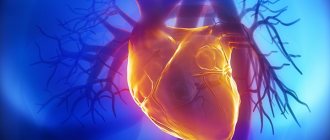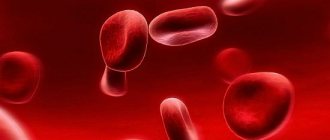Most carbohydrates enter the human digestive tract in the form of polysaccharides - giant molecules that, due to their large size, are not able to pass through the intestinal walls and biological cell membranes.
It is necessary to grind them, crushing them into small parts (monosaccharides), which can freely penetrate the cells and there, oxidizing, become a source of energy. For this purpose, the human body contains a food enzyme - amylase. Knowledge of its levels in the blood of women and men helps to avoid problems with the digestive tract.
The norm of amylase in the blood of women, men, children by age
Amylase is partially produced by the salivary glands, participating in the process of primary grinding and breakdown of food with the formation of a food bolus. The enzyme is found in small quantities in muscles, kidneys, lungs, and ovaries.
The synthesis of its main amount occurs in the pancreas: amylase with other digestive enzymes (lipase, protease) is a component of the pancreatic juice produced by the gland. Having fulfilled its role, the enzyme is excreted from the body in the urine.
Therefore they distinguish:
- pancreatic amylase - an enzyme produced by the pancreas;
- alpha-amylase - all the amylase that is produced in the body;
- diastase - amylase found in urine.
For the proper functioning of the digestive system, a normal concentration of the enzyme in the blood is necessary, which is independent of gender, but dependent on age.
Indications for analysis
Using alpha-amylase testing, doctors can assess the patient’s condition in many areas at once, since determining the concentration of this enzyme can indicate disturbances in many metabolic processes, as well as the presence of inflammation.
Amylase is very important for the proper functioning of the digestive system, so a study of its level is most often prescribed if there are suspicions of diseases and disorders of the gastrointestinal tract.
When testing blood for amylase levels, the doctor may suspect the patient has certain ailments, for example, mumps, hepatitis or diabetes. But the main indication for such an analysis is the suspicion of pancreatitis or its presence in acute as well as chronic form.
The circulation of amylase in the body occurs in such a way that the enzyme produced by the pancreatic cells of the glandular structure, entering the bloodstream, is further distributed to all available vessels. In this case, its partial neutralization occurs in the liver, but part of the enzyme that has not been destroyed penetrates the kidneys, where it is excreted in the urine. For this reason, amylase can be detected in many biological fluids of the body by conducting appropriate tests.
It should be noted that the pancreas is not the only organ that produces amylase. Its synthesis also occurs in the salivary glands.
However, the activity of the enzyme produced in the oral cavity is much lower, so it does not have a special effect on the general indicators of the substance in blood tests.
Amylase: normal level in the blood of women, men and children
| Alpha amylase (per 1 liter of blood) | |
| Age | Indicators |
| Child under 2 years old | 5-65 units/l |
| Children from 2 years old and adults up to 70 years old | 25-125 units/l |
| Adults over 70 years of age | 20-160 units/l |
| Pancreatic amylase (per 1 liter of blood) | |
| Age | Indicators |
| Infants up to six months | less than 8 units/l |
| Babies from six months to one year | less than 23 units/l |
| Children from one to 10 years old | less than 31 units/l |
| Teenagers from 10 to 16 years old | less than 39 units/l |
| Adults | less than 50 units/l |
In newborns, the level of amylase is insignificant, since other enzymes are responsible for processing mother’s milk, but with the introduction of new foods into the diet, its amount gradually rises, which is the physiological norm.
Normal indicators
Amylase is usually found in the blood in small quantities. In this case, the pancreatic substance is about 40%, and the substance produced by the salivary glands is 60%. When performing a biochemical blood test (BAC), two parameters characterizing this substance are assessed: the total amount and specifically pancreatic amylase.
Diagnostics is performed using the enzymatic colorimetric method. The amylase concentration is determined in units per 1 liter of blood (U/L). It is known that the biochemical processes in female and male bodies have some differences, but, despite this fact, the normal levels of this particular enzyme are the same for both sexes. They look like this:
Throughout almost the entire life of an adult, the alpha-amylase level is not prone to change, and only in older people does its range slightly expand. The lower limit decreases and the upper limit increases.
The average levels of alpha-amylase in the blood have a fairly wide range, which is due to the individual characteristics of a particular person. At the same time, the level of pancreatic amylase increases after adulthood, and then remains at the same level.
Amylase levels in children
In young children who have not yet reached the age of two, the alpha-amylase content should not go beyond 5–65 U/l. After 2 years, its level increases significantly. This is explained by the fact that from approximately this age, the child’s diet gradually begins to resemble an adult’s, and he adapts to foods that include starch.
During the described time period, normal enzyme values can fluctuate in the range of 25–125 U/l. In this case, pancreatic amylase in children should have the following coefficients:
During the first 12 months of life, the content of amylase in the serum of children is insignificant, but when they reach the age of one year, the enzyme produced by the pancreas increases almost 4 times. And in the puberty period, the indicators increase by several units.
What happens when amylase levels rise?
For a middle-aged adult, alpha-amylase levels up to 120 units/l and pancreatic amylase levels up to 50 units/l are considered normal. A slight excess of these parameters is a temporary phenomenon, can be associated with eating foods rich in carbohydrates, emotional or physical stress and should not cause a noticeable deterioration in well-being.
Pathology is indicated when the amount of enzyme increases greatly and is accompanied by the following symptoms:
- pain in the right side, intensifying after eating;
- diarrhea;
- deterioration of health, weakness, fatigue.
The role of amylase in the body
Amylase or alpha-amylase is a digestive enzyme, and its main production is carried out by the pancreas, and a smaller part is synthesized by the salivary glands. The main task of this substance is to break down starch into olisaccharides, in other words, simpler carbohydrates. Under the influence of an enzyme, they break down and are then transported into the blood.
This process begins in the oral cavity, immediately after food enters it, and is provided by amylase produced by the salivary glands (S-type). Further, the effect of the substance continues in the following parts of the digestive system, and is carried out by amylase synthesized by the pancreas (P-type).
This type of enzyme is called pancreatic amylase, and with its help the final breakdown of starch is carried out. Only thanks to the action of the described substance, the carbohydrates included in its composition are safely absorbed by the body and spent on natural needs. The quality of this process directly depends on the properties of the enzyme and its quantity.
Reasons for increased amylase
The main reason for the increase in the concentration of the enzyme in the blood is the improper functioning of the pancreas, which synthesizes amylase in huge quantities.
In turn, this may be caused by:
- excess pancreatic juice;
- the presence of an obstacle that impedes its normal circulation;
- inflammatory processes in the gland itself or in tissues adjacent to it.
All these problems do not arise on their own, but are a direct consequence of various gastrointestinal pathologies or infectious diseases.
Chronic and acute pancreatitis
Acute pancreatitis is a rapidly developing inflammation of the pancreas tissue. Normally, the gastric juice produced by it passes through the ducts into the duodenum. Here the enzymes contained in the juice are activated and start the food processing process.
If the outflow of gastric juice is difficult, it accumulates in the pancreatic cavity, enzymes are activated ahead of time and begin to process the gland itself, causing its destruction. In turn, the rejected tissues provoke an increase in enzyme activity, giving rise to a pathological avalanche-like process, in which more and more new areas are involved.
The level of amylase in the blood during acute pancreatitis in men and women can increase 8 times. At risk are adults who abuse alcohol.
The main symptoms of the disease are:
- attacks of severe girdling pain. They are localized in the right side, the duration can sometimes be several days;
- vomiting with the presence of bile in the vomit, which does not improve the patient’s condition;
- lack of appetite, heartburn, prolonged hiccups;
- constipation or diarrhea;
- dry mouth, the appearance of a white or yellow coating on the tongue;
- bloating of the upper abdomen with tension in the abdominal wall;
- bluish skin with a yellow tint, yellowing of the whites of the eyes;
- deterioration of health: fever, rapid heartbeat, decreased blood pressure, sweating, rapid weight loss.
In the chronic form of pancreatitis, the disease is sluggish; during remission, the symptoms described above are absent, appearing during exacerbation. The structure of the glandular tissue of the pancreas is gradually replaced by connective tissue, which over time leads to insufficient production of digestive enzymes, including amylase.
Viral (epidemic) parotitis
A childhood disease, better known as mumps or mumps, in which the salivary glands are affected by paromyxovirus, resulting in irritation of the salivary glands and increased production of alpha-amylase.
The symptoms of the disease are as follows:
- severe pain in the area of the salivary glands (near the ears, under the tongue), intensifying when chewing and when pressing on the place located behind the earlobe;
- pronounced swelling of the lower part of the face, sometimes spreading to the neck;
- tinnitus caused by tumor pressure on the Eustachian tube;
- heat.
As a rule, if all the doctor’s recommendations regarding the patient’s diet and regimen are followed, mumps does not cause complications, normal functioning of the salivary glands is restored after recovery and amylase production returns to normal.
Endocrine pathologies
Disturbances in the functioning of the endocrine glands can cause hormonal imbalance and, as a result, lead to increased production of amylase.
For example:
- Pathologies of the thyroid gland disrupt the functioning of the salivary glands.
- Damage to the island cells of the pancreas, responsible for the production of the hormones glucagon and insulin, which, respectively, lower and increase the level of glucose in the blood, leads to stagnation of pancreatic juice and an increase in amylase concentration.
In addition, improper functioning of the pancreas often leads to the development of cholelithiasis and cholecystitis, which, in turn, cause an increase in the level of the enzyme.
A metabolic disorder caused by hormonal imbalance can provoke the appearance of stones in the bladder and urethra and lead to the accumulation of diastase in the body.
Increased amylase forms urinary stones
The presence of an endocrine disease can be recognized by the following signs:
- sudden, causeless change in weight;
- fragility of bone tissue, frequent fractures of limbs in the absence of a strong traumatic factor;
- dry mucous membranes of the eyes and mouth;
- frequent urge to urinate;
- blurred vision;
- hair loss or excess hair growth;
- high blood pressure that does not decrease when taking pills
Diabetes
A disease in which the body does not absorb glucose and the substances that are its source remain unclaimed, gradually accumulating in the body.
The cause of the disease is a lack of insulin, a hormone produced by the pancreas. In diabetes, the body, trying to compensate for insulin deficiency, begins to intensively produce food enzymes that break down polysaccharides, and the level of amylase in the blood increases significantly.
Distinguish:
| Type | Description | Symptoms |
| Type 1 diabetes | When insulin is not produced due to damage to the gland tissue responsible for its synthesis. Type 1 diabetes can affect people of any age, including children. | In the list of symptoms:
|
| Type 2 diabetes | When insulin is produced in sufficient quantities, but is not absorbed by the body and is not used “as intended.” Usually acquired, at risk are people over 50 years of age. | Symptoms of type 1 diabetes include:
|
Peritonitis
Acute inflammation of the peritoneum, the most common cause of which is a violation of the integrity of the hollow organs of the gastrointestinal tract (for example, rupture of the appendix, damage to the walls of the small or large intestine), in which their contents enter the abdominal cavity. The developing process of inflammation causes irritation of the pancreas and increases the activity of its tissues that produce amylase.
In acute peritonitis, the disease develops rapidly and is characterized by:
- severe pain in the abdominal area, aggravated by any movement;
- nausea and bouts of vomiting;
- sudden strong fever;
- sweating;
- complete loss of appetite.
Chronic peritonitis can be a consequence of the lack or improper treatment of internal organs, sometimes acute peritonitis that has passed into the chronic stage leads to it. The disease is manifested by periodic pain, problems with bowel and bladder emptying, weakness, fever, and bluish skin.
Oncology
A high level of amylase in the absence of all other causes is one of the clearest signs of the presence of cancer.
In this case, there are other symptoms depending on the location of the tumor:
- wheezing and untreatable cough. This may indicate cancer of the lungs and other organs of the respiratory system;
- changes in taste preferences, problems with swallowing food, intestinal dysfunction, changes in the appearance and smell of stool. A possible cause of these phenomena is a tumor affecting the gastrointestinal tract;
- neck pain. May indicate throat cancer;
- a sharp change in the appearance and color of moles. This is a warning sign of skin cancer.
There are also common signs of oncology:
- poorly healing wounds;
- unexplained pain;
- bleeding;
- sudden rise in temperature for no apparent reason;
- sudden weight loss.
Kidney failure
A pathological condition of the body in which the activity of the kidneys is disrupted and they lose the ability to fully excrete urine, and the diastase contained in it accumulates in the body.
The main symptoms are:
- stabbing pain in the lower back, localized on one or both sides.
- changes in the volume, appearance and smell of urine, a burning sensation when urinating;
- feeling of chills associated with insufficient production of erythropoietin and poor circulation;
- swelling of the legs, ankles, hands, face;
- rash and itching are a consequence of the accumulation of toxins in the body;
- metallic taste in the mouth, changes in taste sensations;
- nausea.
Poisoning
Substances that promote retention of pancreatic juice in the gland can increase amylase levels.
This often occurs during poisoning:
- Alcohol. Abuse of strong drinks often leads to the development of alcoholic pancreatitis, which disrupts the functioning of the pancreas and increases amylase activity.
- Stale food (food poisoning).
- Various synthetic additives: flavorings, flavor enhancers, preservatives.
- Chemicals.
- Some medications if taken incorrectly.
Intoxication of the body, which will result in an increase in amylase concentration, can also be caused by excessive consumption of fatty, spicy, salty foods, as well as constant overeating.
Among the unpleasant symptoms of poisoning:
- vomit;
- diarrhea;
- heat;
- headache;
- dry mouth;
- general weakness.
Ectopic pregnancy
Ectopic pregnancy is a pathology in which a fertilized egg cannot, for some reason, pass into the uterus (curved tubes, adhesions), and therefore attaches to the walls of the fallopian tube or to the wall of the abdominal cavity, can also provoke an increase in amylase levels, in which its concentration increases tens of times.
In the early stages, an ectopic pregnancy can easily be confused with a normal pregnancy, since all its characteristic signs are present:
- absence of menstruation;
- sensitivity of the mammary glands;
- toxicosis.
The following symptoms should alert you:
- sharp pain in the lower abdomen, usually in the side;
- bleeding from the vagina;
- general weakness.
Decrease in indicators
When the concentration of amylase falls below normal limits, this also negatively affects the condition of the body. The following factors lead to a decline in the level. Acute or chronic hepatitis is inflammation of the liver. This disease is most often caused by viral infections and is combined with disorders of carbohydrate metabolism.
The load on all organs responsible for the production of enzymes increases, including the pancreas. At first, it is still able to synthesize a sufficient amount of amylase, but over time its performance decreases and much less enzyme is produced, which is confirmed by a biochemical blood test.
Oncological processes in the pancreas. As tumors develop, pathological changes occur in the tissue structures of the affected organ, as a result of which it loses most of its functions.
Cystic fibrosis is a systemic disease of a hereditary nature, the pathological effect of which is aimed at the endocrine glands and respiratory organs, which leads to the loss of many of their functions. In addition, a decrease in amylase concentration is observed in thyrotoxicosis, preeclampsia and myocardial infarction.
Blood amylase levels may decrease in men and women if they have high cholesterol levels. This is quite rare, but is significant evidence of the presence of serious malfunctions in the body. Often, a decrease in amylase is caused by disturbances in enzyme activity of genetic etiology.
Serum amylase levels can also be affected by taking certain medications. Narcotic analgesics, Captopril, secretin, corticosteroids, asparaginase, estrogen, diuretics, oral contraceptives, tetracyclines, sulfonamides, nitrofurans, Ibuprofen, Methyldopa, Indomethacin can increase its concentration. Oxalates and anabolic steroids can reduce enzyme levels.
For patients. The secretion of amylase and its concentration in the blood may change due to intoxication, falling from a height and other injuries. At the same time, fluctuations in the level of the substance are characteristic of both female and male sexes, and can be in the direction of decreasing content or, conversely, increasing.
In any case, the results of the LHC, in which it was discovered that the amylase concentration is beyond normal limits, cannot be left without due attention. You should definitely undergo all recommended diagnostics, with the help of which the doctor can find the cause of these changes. In Moscow and many other cities, this can be done in just a few days, without spending a lot of time.
It is worth remembering that changes in the content of a particular enzyme often occur due to serious reasons, and such signs cannot be ignored. Subsequently, this can lead to dangerous complications that could have been avoided with timely diagnosis and the necessary therapy.
Why does amylase increase during pregnancy?
Amylase (the blood norm in pregnant women may have slight deviations down or up) can increase and decrease due to the following factors:
- radical restructuring of all body systems;
- changes in hormonal levels;
- change in taste preferences;
- changes in lifestyle, diet;
- anxiety associated with worries about future motherhood;
- toxicosis.
At the same time, pregnancy, creating an additional burden on the body, can lead to the rapid development of pathologies the existence of which the woman had not previously suspected, or to the transition of a chronic disease to an acute stage and, as a result, to a strong increase in amylase concentration.
The probable reasons for multiple excesses of the level of this enzyme in a pregnant woman are:
- transition to the acute form of chronic pancreatitis;
- progressive gallstone disease;
- ectopic pregnancy.
In the first two cases, with timely diagnosis (tests, laboratory tests, ultrasound) and treatment, it is possible to eliminate the problem using conservative methods or temporarily stop the development of the disease. An ectopic pregnancy will require urgent surgical intervention.
Amylase (the blood level in pregnant women is often low) decreases in volume due to:
- hereditary factors (cystic fibrosis);
- liver damage (hepatitis);
- necrosis of pancreatic tissue (pancreatic necrosis).
If amylase is low, what does this mean?
The amylase level is considered low if the test results reveal less than 100 U/L of serum. This can be caused by various reasons. For example, low amylase may be a consequence of acute or chronic hepatitis. With this disease, there is a disturbance in carbohydrate metabolism in the body, which is why all enzymes, and especially amylase, experience increased stress. And although the synthesis of amylase occurs uninterruptedly, much more of it is consumed. Therefore, a blood test shows an insufficient amount of this enzyme.
The level of amylase in the blood can decrease as a result of a malignant tumor of the pancreas - tissue degeneration occurs here, and the production of the enzyme is disrupted. This phenomenon is called pancreatic insufficiency. It can also be caused by injury or if the pancreas has been removed by surgery.
If amylase is low, this may be a consequence of severe cystic fibrosis.
Remember that it is impossible to establish an accurate diagnosis based on the results of any one test. To clarify and confirm it, the specialist must take into account all the combined factors and, if necessary, prescribe an additional examination.
Preparing for the study
To obtain the correct result, careful preparation for the procedure is required.
In particular, the patient's task is:
- 2-3 days before the test, stick to a diet, giving up fatty, spicy foods and drinking strong drinks. It is recommended to eat small portions: 5-6 times a day.
- For some time, stop taking medications that can distort the result, or, if it is impossible to cancel them, reschedule the examination to another time. The doctor makes the decision.
- Avoid eating completely for 8-12 hours before visiting the clinic.
- Stop smoking an hour before donating blood.
- For several hours preceding the procedure, avoid high physical, mental and emotional stress.
Any other medical examinations and procedures are performed only after the tests have been completed.
For pancreatitis
If the level of enzymes in the blood increases with this disease, treatment of the disease becomes very problematic.
The amylase level in pancreatitis is not a diagnosis. Therefore, when it jumps, it is not the indicator itself that needs to be treated, but the reasons why it decreases.
In acute pancreatitis, the level of enzymes increases 6-7 times , and in especially severe cases this figure can increase tenfold:
- In the first days after an attack, the surest treatment is fasting.
- The patient eats practically nothing in order to relieve symptoms, reduce pain, and also normalize the functioning of the pancreas.
Therapy for acute pancreatitis usually lasts for 7-10 days. After which the patient must follow a strict diet and be sure to take enzyme and painkillers.
Attention! If you do not follow the recommendations of a specialist, there is a danger that the disease will develop into a chronic form.
If the disease nevertheless moves into the chronic phase, the level of amylase remains increased - in this case, enzyme levels exceed the norm by 5-6 times.
The first symptoms of chronic pancreatitis may be:
- pain in the abdomen that worsens after eating or drinking;
- sharp weight loss, which is explained by a lack of alpha-amylase;
- frequent belching;
- vomiting, disgust from many dishes;
- loose, clay-colored stools;
- heartburn;
- irritability.
After just a week of intensive therapy, amylase levels return to normal levels.
Chronic disease is treated with antispasmodics and drugs that are aimed at reducing pancreatic secretion.
Throughout the entire treatment period, the patient must follow a strict diet.
Important! In order to avoid a recurrent attack, it is necessary to constantly eat properly, avoid overwork and stressful situations, and refrain from frequent consumption of alcoholic beverages.
Also, every 6 months you need to take a biochemical blood test to determine the content of alpha-amylase - this will help prevent the development of the disease.
What is pancreatitis, what are the methods of diagnosis and treatment of the disease is described in the video:
How they take the analysis, how long to wait for answers
Blood is taken from the ulnar vein, for which the site of the future puncture is treated with an antiseptic, then the hand is clamped with a tourniquet and the needle is inserted into the vein. Since the procedure is performed on an empty stomach, it is scheduled for the morning hours, usually from 8 to 11 am.
In an emergency, blood is taken at any time, and the doctor subsequently adjusts the result, making allowances for the time of day, quantity and quality of food. Next, the biomaterial is examined, why carbohydrates are added to it and based on the rate of their breakdown, a conclusion is drawn about the concentration of the enzyme.
In addition to amylase levels, other indicators are also assessed: total protein, lipid metabolism data, levels of cholesterol, glucose, hormones, and other food enzymes, which help determine the presence or absence of pathologies of internal organs. The test result can be obtained on the day of the test, within a few hours.
If amylase is elevated, what does this mean?
A gradual increase in the level of amylase in the blood occurs within several hours from the onset of an attack of acute pancreatitis. After the attack ends, this indicator returns to normal, but this takes several days. Acute pancreatitis can cause amylase levels to be 5 or 6 times higher than normal. However, if amylase is elevated, this does not always indicate pancreatitis; moreover, sometimes even during an attack and after it, amylase may remain within normal limits. Therefore, to make an accurate diagnosis, it is necessary to take into account other markers, for example, lipase levels.
Other diseases that can cause elevated blood amylase levels:
- pancreatic cyst,
- malignant tumor of the pancreas,
- diseases of the biliary tract and gallbladder,
- chronic renal failure,
- inflammatory processes in other abdominal organs,
- cystic fibrosis,
- alcohol intoxication,
- ectopic pregnancy,
- diabetes,
- parotitis,
- insufficient activity of the salivary glands, for example, when they are damaged.
Taking certain medications can have a similar effect. Therefore, before taking a blood or urine test to check your amylase level, be sure to tell your doctor about all the medications you have taken recently. Including hormones and oral contraceptives.
Decoding the analysis results
The result of a biochemical analysis is a form in which all the studied indicators are listed in one column, and their meaning in the other. Depending on the standards adopted in a particular medical institution, amylase may be indicated by the inscriptions: “AMYL”, or “Alpha-amylase”.
Amylase (the normal level in the blood of women and men should be in the range from 28 to 100 units/l) increases with gastrointestinal pathologies. However, drawing conclusions based on the results of the analysis, making a final decision about the presence or absence of a disease and prescribing treatment is the task of the doctor, not the patient.
What is amylase
Amylase has several varieties, for example, pancreatic amylase, diastase, but alpha-amylase is most often determined. Essentially, this element is part of the secretion of the pancreas, called pancreatic juice. Its production is carried out by exocrine cells, after which the juice enters the cavity of the duodenum through special ducts.
Pancreatic juice is responsible for the correct processing of consumed food, primarily for the breakdown of complex carbohydrates into elements that are easier to digest. The enzyme also takes an active part in the breakdown of substances such as starch and glycogen.
As a rule, the end product of amylase is the production of glucose in its simple version, which is actively absorbed by cells, forming the energy they need.
Under normal conditions, amylase should only enter the designated intestinal lumen. A small amount of this enzyme also enters the blood, which is considered normal, because each of the body’s cells has direct contact with the blood, ensuring its existence and vital activity.
The concentration of diastase in the blood does not go beyond normal limits until the integrity of the cells of the main organ (pancreas) is violated.
An important point is that amylase has very high enzymatic activity, and therefore, having an effect on various tissues of the body, is capable of destroying them.
It is necessary to ensure that the concentration of alpha-amylase is always within normal limits.
Treatment with drugs
Deviations from the normal level of amylase in the direction of decrease or increase cannot occur on their own: they are only a consequence of certain negative processes in the body, a symptom indicating the presence of pathology.
The choice of drugs that normalize the concentration of the enzyme depends on the specific disease:
| Disease | Therapy |
| Chronic and acute pancreatitis | Drugs that suppress the secretion of food enzymes are prescribed: omeprazole and contrical. In order to unload the gland, drugs containing other enzymes are often prescribed: lipase (breaks down fats), protease (breaks down proteins). |
| Mumps | Treatment boils down to providing the patient with appropriate nutrition and a sleep regime. If the disease is difficult to tolerate, the doctor may prescribe painkillers and antispasmodics: Furosimed, Actovegin, Agopurin, Trental. |
| Endocrine pathologies caused by thyroid dysfunction | To normalize metabolic processes and reduce amylase levels, hormonal drugs are prescribed: Thyroxine and Thyroid. |
| Diabetes | Biguanides are used - drugs that can improve the absorption of glucose and, accordingly, by reducing its concentration, normalize the amount of amylase. Bigunides include Metformin and Phenformin. |
| Peritonitis | Urgent surgical intervention will be required; in the postoperative period, the patient is prescribed antibacterial drugs: Metrogyl, Ampicillin. Amylase levels return to normal as soon as inflammation is eliminated. |
| Kidney failure | It is necessary to normalize the excretion of urine from the body and thereby reduce the concentration of diastase. Diuretics that are widely used include Lasix and ethacrynic acid. |
| Poisoning | The substance that caused it should be removed from the body as quickly as possible. Absorbents successfully cope with this: activated carbon, enterosgel, smecta. |
| Ectopic pregnancy | In most cases, surgical intervention is not possible. In the very early stages, the drugs Mifepristone and Methotrexate can be used, which cause detachment of the fertilized egg and provoke a miscarriage. |
Reasons for deviations
Amylase may increase in the following cases:
- ectopic pregnancy,
- macroamylasemia,
- abdominal injuries
- herpes viruses type 4,
- complications in the postoperative period (especially after abdominal surgery),
- violation of the integrity of the aneurysm,
- abortion.
An unhealthy diet, as well as frequent consumption of alcoholic beverages, can also increase enzymes in biological secretions. Also, the amount of amylase can be affected by taking certain medications, including diuretics and oral contraceptives.
In rare cases, a genetic predisposition has an influence, which makes it difficult for enzymes to enter the urine, and accordingly they begin to accumulate in the body.
Experts say that stress, even moderate stress, can disrupt all metabolic processes in the body and promote the growth of amylase.
Reasons for low amylase levels may include:
- absence of the pancreas, if this organ has been surgically removed, its replacement is required: this is done by taking enzyme medications,
- necrotic changes in the pancreas area, which lead to complete destruction of organ tissue,
- oncological diseases of the liver, stomach and intestines,
- hepatitis (both in acute and chronic form),
- cystic fibrosis, a hereditary disease characterized by disruptions in metabolic processes,
- toxicosis in pregnant women.
Reference! In some cases, a decrease in amylase in the blood is temporary and may occur due to taking hormonal contraceptives, diuretics, narcotic painkillers, or medications that contain adrenal hormones.
Taking these medications may give incorrect test results. Therefore, before the examination you need to warn your doctor about this. If you do not tell your doctor, repeat tests will be necessary.
Traditional medicine recipes
Home methods can speed up the moment of recovery and help normalize the process of amylase production, provided that:
- they are an addition to drug treatment;
- used only after consultation with your doctor;
- the disease does not require surgical intervention. For example, if you suspect peritonitis or ectopic pregnancy, you cannot do without qualified medical care;
- the patient's condition is satisfactory.
| Recipe | Purpose | Preparation and use |
| Oat jelly | Helps with pancreatitis to restore proper functioning of the pancreas | 1. Washed oats are poured with boiling water. 2. After a day, grind it. 3. The resulting slurry is diluted with water and boiled for several minutes. 4. After cooling, filter and take before eating. |
| Linden blossom infusion | Helps alleviate the patient's condition with mumps | 1. 1 tbsp. pour a spoonful of flowers into a glass of boiling water and let it brew for 15 minutes. 2. Strain and take a third of a glass 3 times a day. |
| Nut-honey mixture | Used for damage to the thyroid gland | 1. Mix buckwheat honey, buckwheat flour, and crushed walnuts in equal parts. 2. Once a week during the day, eat only this mixture. The course lasts 6 weeks. |
| Blueberry leaf infusion | Used for diabetes | 1. 1 tbsp. l. blueberry leaves collected at the end of spring are poured with a glass of boiling water. 2. The composition is placed in a water bath and heated for 30-40 minutes. 3. Strain through cheesecloth. The infusion is taken 5 times a day, ½ cup. |
| Sitz baths based on a decoction of sage, pine needles, sea salt | In case of peritonitis, after discharge from the hospital they will help to quickly restore strength, avoid re-inflammation of the peritoneum and normalize the concentration of amylase. | 1. The herb is steamed in advance in a thermos or filter bags with it are filled with boiling water for 10-15 minutes. 2. The decoction is poured into the prepared bath. |
| Foods rich in vitamin B17 | In oncology, they are able to destroy cancer cells. | 1. Grape, apple, and apricot seeds should be crushed. 2. Add the resulting powder to food, a pinch at a time. |
| Herbal teas | In case of ectopic pregnancy, the use of these drugs is possible only during the recovery period. They will help a woman regain her strength faster. | Teas are prepared based on viburnum and calendula, with the addition of:
|
Why is an alpha-amylase test prescribed?
The level of amylase (from English Amylase) in the blood plasma is an indicator by which one can judge whether a patient has inflammatory diseases, such as diabetes, hepatitis and others.
An amylase test is prescribed primarily for people who have a clinical picture of pancreatic dysfunction. In acute and chronic pancreatitis, this study must be performed.
Blood diastase levels are determined on an empty stomach.
During biochemical analysis, you should refrain from eating fatty and spicy foods the day before donating blood.
Such foods may interfere with the secretion of pancreatic enzymes and lead to false results.
Diet principles for high amylase levels
Treatment may be ineffective if the patient continues to force his pancreas to work beyond its limits.
To fully restore its functions, you will need a special diet that excludes foods rich in carbohydrates, namely:
- alcohol;
- chocolate candies;
- baked goods, cakes, pastries;
- coffee;
- canned food;
- excessively fatty, spicy, salty, sour dishes. You should also avoid smoked foods.
They should be replaced by low-carbohydrate foods, which include:
- lean meat (namely meat, not sausages, which may contain a high percentage of soy): veal, rabbit, poultry, beef, as well as meat by-products;
- vegetables (except potatoes and peas - they should be consumed with caution, in small quantities);
- fruits, with the exception of grapes, melon, persimmon, which are rich in carbohydrates;
- fish and any seafood;
- low-fat fermented milk products: cottage cheese, kefir, yogurt.
Proper food preparation is also important: you will need to remove fried foods from your diet; foods should be prepared by boiling, stewing, and steaming. It is also necessary to choose the right diet: do not overeat, eat food in small portions, 5-6 times a day.
Diagnostic methods
Since the blood in the human body is constantly in motion, the glandular cells are forced to produce special enzymes. For that. To determine the level of the enzyme, several research methods are used:
- Analysis of urine;
- blood analysis.
It is important to note that the level in urine is much higher, although this research method is considered simpler and more popular. As for the second type, this method is a little more complicated even in terms of collecting material. It is carried out from a peripheral vein, and the most optimal conditions are considered to be on an empty stomach and in the morning. In this case, it is imperative to take into account not only the time characteristics, but also the amount of food consumed immediately before the procedure. These criteria will allow, if necessary, to adjust the results obtained.
Forecast
Provided timely consultation with a doctor, adequate treatment of the underlying disease and compliance with all dietary requirements, the level of amylase in the blood in men and women can be completely returned to normal.
If the patient continues to lead the same lifestyle, abuse alcohol, eat too much sweet, spicy and salty foods, then in the future he will have to face even more serious problems.
Article design: Mila Friedan
Prevention
Elevated amylase levels are an alarming sign of organ failure. This disease should be ignored. At the slightest sign of changes in amylase levels, you should immediately consult an endocrinologist.
People prone to increased or decreased enzymes should follow the correct diet with a healthy diet; if you have the slightest pain in the stomach, you should consult a doctor; in any case, avoid frequent drinking of alcoholic beverages. If your doctor prescribes medications for you, be sure to strictly adhere to the rules for taking them.
A slight increase (by 1-2 units) in the level of amylase in the blood is not a cause for concern. But only if the person feels normal.
However, if the level of enzymes has increased several times, this may indicate the development of pathological processes in the body.
Therefore, you need to listen to the body’s reactions, promptly contact specialists for advice and begin proper treatment.
How is the analysis carried out?
Blood is drawn using a volumetric syringe from a vein in the elbow area. Before taking the biomaterial, you should actively work with the brush to activate blood circulation and fill the vein itself. During the fence, the fist must be clenched.
The last recommendation is due to the fact that needles for collecting biomaterials are used thicker than for intravenous drips. Therefore, blood is released longer and more abundantly from the vein into the surrounding tissues. Neglecting this condition will lead to the formation of an extensive bruise and its prolonged resorption.
If it was not possible to avoid bruising, you can use ointments like Finalgon with red pepper extract. The well-known Vietnamese star is also good at eliminating bruises. The essential oils in its composition penetrate the human skin, increase blood circulation, cool and soothe the skin.
When and why is an amylase test required?
In most cases, an increase in serum amylase is caused by an increase in the amount of enzyme that enters the circulation and/or a decrease in its excretion. The test is mainly used for the diagnosis and monitoring of acute pancreatitis and other pancreatic disorders and is performed simultaneously with lipase.
The level may also be elevated in the case of pancreatic cancer, but usually the increase occurs too late to be of any diagnostic usefulness, however the results can be used to test whether cancer therapy is effective in the case of cancer.
Finally, it is prescribed by doctors in case of symptoms that are still unexplained, for example:
- severe abdominal pain;
- fever (high temperature);
- decreased appetite;
- nausea, vomiting.
Why is amylase lower than normal?
A decrease in alpha-amylase levels does not occur as often. This occurs in serious advanced pancreatic pathologies.
The most common reasons for a significant decrease in the amount of diastase are:
- Pancreatic necrosis is the destruction of part of the pancreas as a result of the influence of alcohol, fatty foods, and diseases of the biliary tract. When necrosis is minor, normal amylase levels are maintained by increasing the activity of whole cells. As soon as most of the organ dies, the amount of diastase drops, including due to the depletion of still functioning cells.
- Pancreatic cancer. Death of the gland as a result of the spread of malignant metastases.
- Pancreatic resection. This operation is performed in the case of cysts in the organ, its cancerous transformation, necrosis.
- Cystic fibrosis is a genetically determined disease manifested by a violation of the secretory function of the exocrine glands. The activity of not only the pancreas, but also the glands of the respiratory system is disrupted.
How to prepare for analysis
The biochemical result of a blood test gives a complete picture of a person’s condition and health. An indicator such as alpha amylase increases in the blood for a number of reasons related to the functional activity of the pancreas. Blood sampling is carried out in the morning on an empty stomach. Therefore, eating breakfast and drinking sweetened drinks on the appointed day is prohibited.
The day before the test, you should not eat fatty, spicy foods high in carbohydrates (bread, rice, pasta, sweets and sugar). It is recommended to limit the consumption of coffee, tea and soda. On the eve of the analysis, stressful situations and physical overexertion should be avoided.
It is also undesirable to drink a lot, so as not to cause dilution of the blood with liquid and provoke excessive excretion of alpha amylase in the urine. In order not to become overtired before collecting biomaterials, it is better to choose a taxi instead of public transport if you do not have a personal car.











